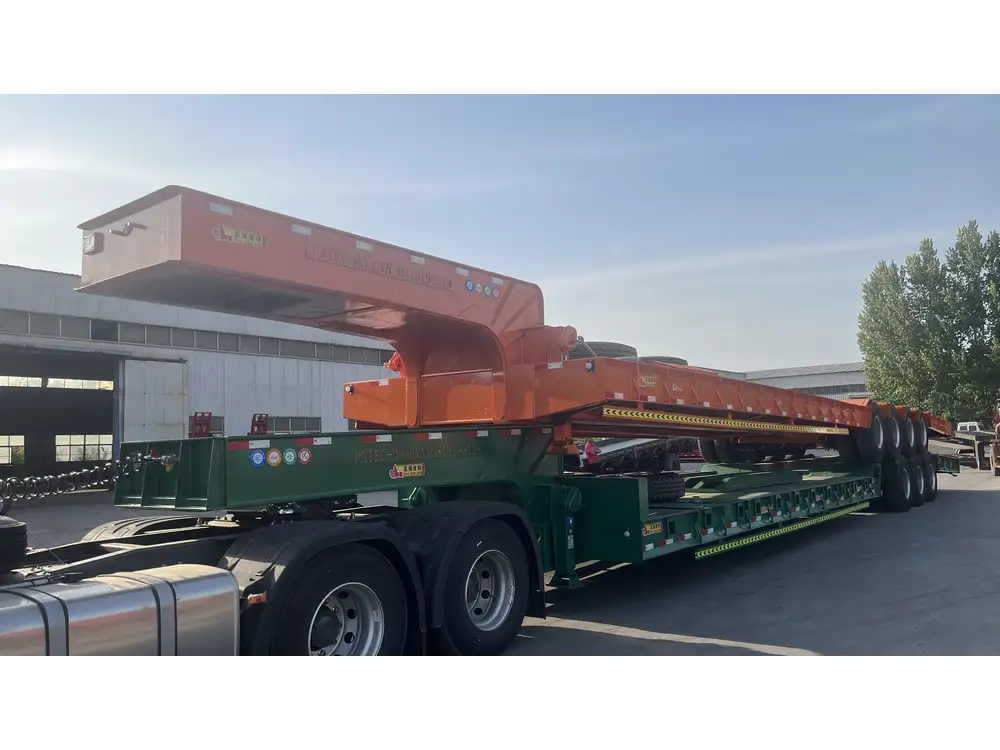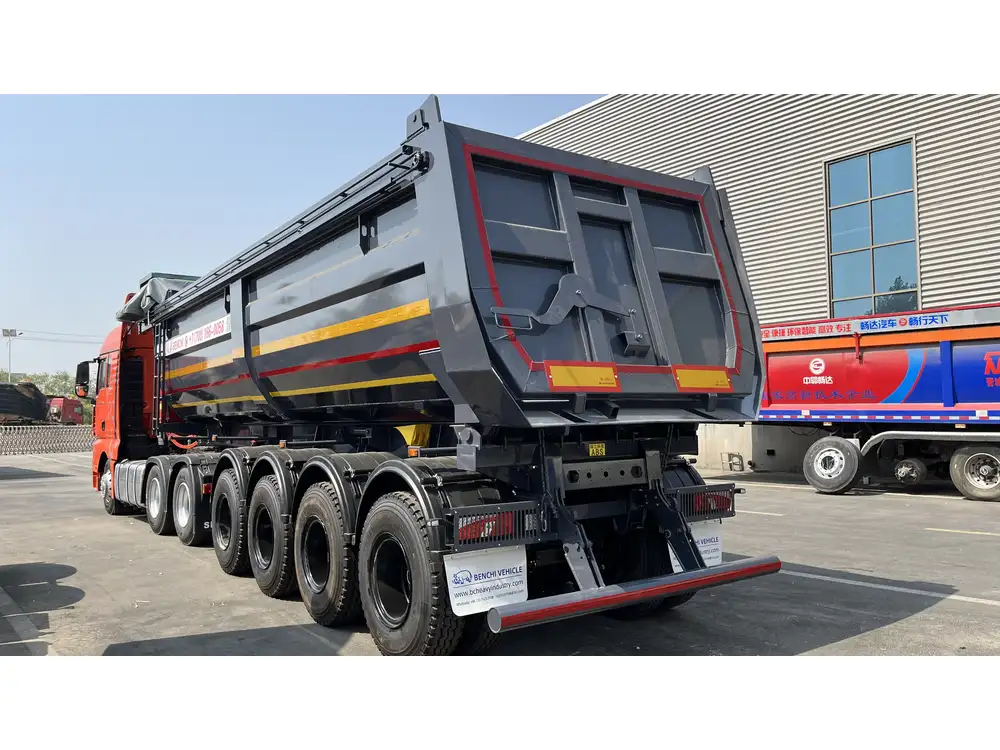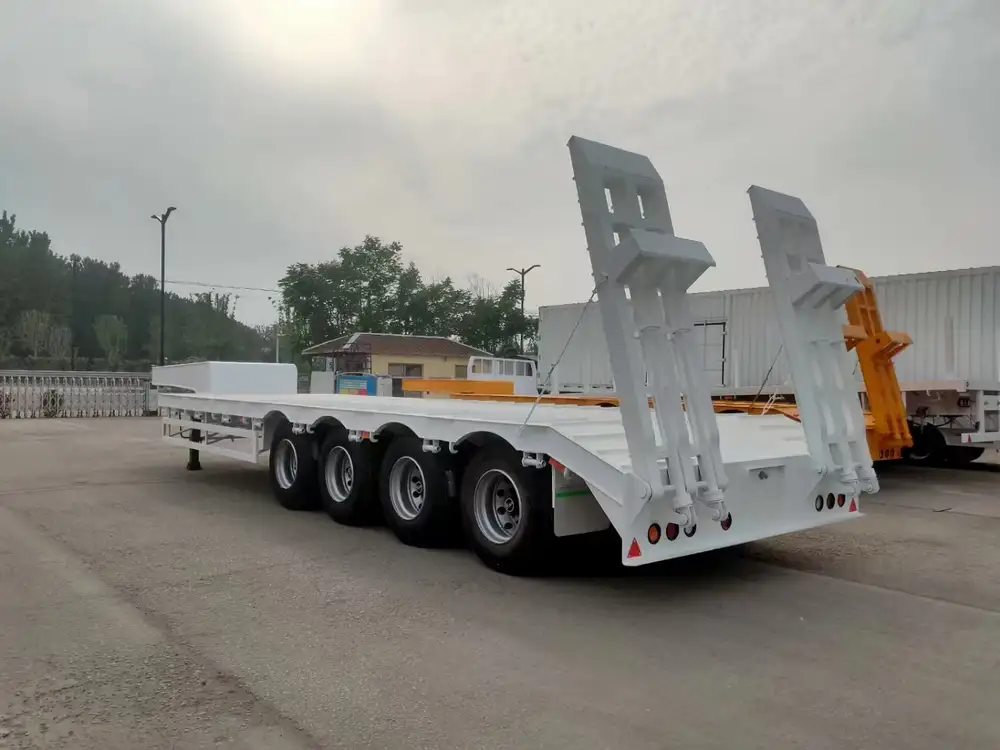When navigating the intricate landscape of the trucking industry, one often comes across fundamental concepts: “semi-truck” and “tractor-trailer.” While these terms are frequently used interchangeably in everyday conversation, they refer to distinct components of large freight vehicles. Understanding their differences, functionalities, and implications can empower businesses and individuals involved in transportation logistics.
What is a Semi-Truck?
A semi-truck, often colloquially referred to as an 18-wheeler, is a powerful vehicle designed for road transport. This engine-driven transportation solution consists mainly of two components:
Cab: This is the front section of the semi-truck, where the driver operates the vehicle. The cab houses essential features such as the steering mechanism, dashboard instruments, and safety controls.
Truck Chassis: The robust framework supporting the cab and engine, the chassis contains the drivetrain components, axles, and suspension systems critical for performance and stability.
Key Features of a Semi-Truck
| Component | Description |
|---|---|
| Engine | High power and torque for sustained heavy hauling. |
| Cabs | Options for day cabs and sleeper cabs for long hauls. |
| Chassis | Built to withstand substantial weight and road conditions. |
| Wheels | Usually equipped with 18 wheels for added stability. |
The immense capabilities of semi-trucks allow them to carry heavy payloads on long journeys, ensuring efficient delivery across vast distances.

What is a Tractor-Trailer?
Conversely, a tractor-trailer constitutes a different aspect of the transport system. In essence, it refers to the entire combination of a semi-truck (tractor) and its attached trailer. The trailer serves as the storage space for cargo and is crucial for the overall functionality of freight transport.
Understanding the Trailer
The trailer itself is a non-motorized vehicle designed to be pulled by the tractor. It can vary significantly in size, shape, and design based on the type of cargo it needs to carry.
| Type of Trailer | Purpose |
|---|---|
| Flatbed Trailer | Ideal for carrying oversized loads, such as machinery. |
| Refrigerated Trailer | Designed for transporting temperature-sensitive freight. |
| Dry Van Trailer | Fully enclosed for general cargo transport. |
| Tanker Trailer | Used for transporting liquids and gases. |
The Role of the Tractor-Trailer Combination
The interplay between the tractor and its trailer not only defines capabilities but also dictates operational efficiency. This configuration allows for the transportation of diverse cargo types and weights, making it an integral part of supply chain dynamics.

Breaking Down Common Misconceptions
Misconception 1: “All Semi-Trucks are Tractor-Trailers”
While every tractor-trailer setup includes a semi-truck, not every semi-truck is paired with a trailer. In certain scenarios, a semi-truck might operate without a trailer for specific local deliveries or maintenance functions. This distinction is crucial for understanding operational versatility.
Misconception 2: “Tractor and Truck are the Same”
The term “tractor” specifically refers to the motorized component of the setup, while “semi-truck” denotes the combination of the tractor and its associated trailer. Clarity in terminology helps reduce potential confusion in professional discussions and logistics planning.

Performance Comparison: Semi-Truck vs. Tractor-Trailer
When assessing the performance metrics of semi-trucks and tractor-trailers, several factors come into play. This section will provide a comparative analysis based on load capacity, fuel efficiency, and maneuverability.
| Feature | Semi-Truck | Tractor-Trailer |
|---|---|---|
| Load Capacity | Generally supports 20,000 – 80,000 lbs | Varies by trailer type (up to 50,000 lbs) |
| Fuel Efficiency | Engine optimized for long hauls | Dependent on trailer weight and aerodynamics |
| Maneuverability | Designed for urban & highway use | More challenging at tight turns |
Load Capacity Insights
Understanding load capacity is vital for logistics operations. Semi-trucks are engineered for varied tasks— from carrying raw materials to delivering finished goods. Meanwhile, the specific configuration of the tractor-trailer can heavily influence performance, especially in terms of payload distribution and balance.
Fuel Efficiency Considerations
Fuel efficiency is intrinsic to operational costing. Semi-trucks are generally more fuel-efficient due to advanced technological implementations, such as aerodynamic designs. On the flip side, the type of trailer impacts overall drag, thus influencing fuel consumption rates.

The Importance of Choosing the Right Configuration
For businesses engaged in long-haul transport or local deliveries, selecting the right semi-truck or tractor-trailer configuration can make a significant impact on operational effectiveness. The following factors should be considered:
- Cargo Type: Different trailers cater to specific cargo requirements— ensuring compliance with regulations.
- Distance: Long-haul operations might require trailers with enhanced aerodynamics for reduced fuel costs.
- Route Conditions: For rural or urban environments, turn radius and height restrictions can alter vehicle choice.
- Regulations: Adherence to local and federal regulations concerning weight limits and licensing is crucial in making informed choices.
Navigating the Regulations
Understanding the regulatory landscape for semi-trucks and tractor-trailers is imperative for compliance and safety. Regulations often dictate aspects such as:
- Weight Limits: Various jurisdictions impose maximum weight limits, compelling logistics teams to analyze load specifics continuously.
- Licensing Requirements: Drivers need appropriate certifications (e.g., Commercial Driver’s License, CDL) to operate these vehicles safely.
- Maintenance Standards: Routine safety inspections are mandated to ensure reliably functioning transportation units.
Conclusion: The Road Ahead
In summary, distinguishing between semi-trucks and tractor-trailers illuminates their unique roles in freight transport. A semi-truck constitutes the powerful motorized unit, while a tractor-trailer amalgamates both elements, facilitating diverse cargo transport.
In the grand scheme of logistics, recognizing both vehicles’ individual functionalities can empower stakeholders, from manufacturers to distributors, enabling them to optimize their operations effectively. Whether engaging in local deliveries or national logistic solutions, a clear understanding of these components empowers companies to navigate their fleets efficiently, ensuring they can meet the demands of modern transportation.

Key Takeaways
- A semi-truck refers specifically to the motorized front half, while a tractor-trailer describes the complete assembly of a truck and trailer.
- Different types of trailers accommodate various kinds of cargo, influencing logistical choices based on operational needs.
- Regulatory compliance is paramount, and understanding the differences between component functionalities ensures that each load is delivered not only efficiently but also in accordance with safety standards.
Armed with this comprehensive understanding, stakeholders in the trucking industry can make better-informed decisions, fostering a culture of efficiency and reliability that ultimately drives success in transportation logistics.



